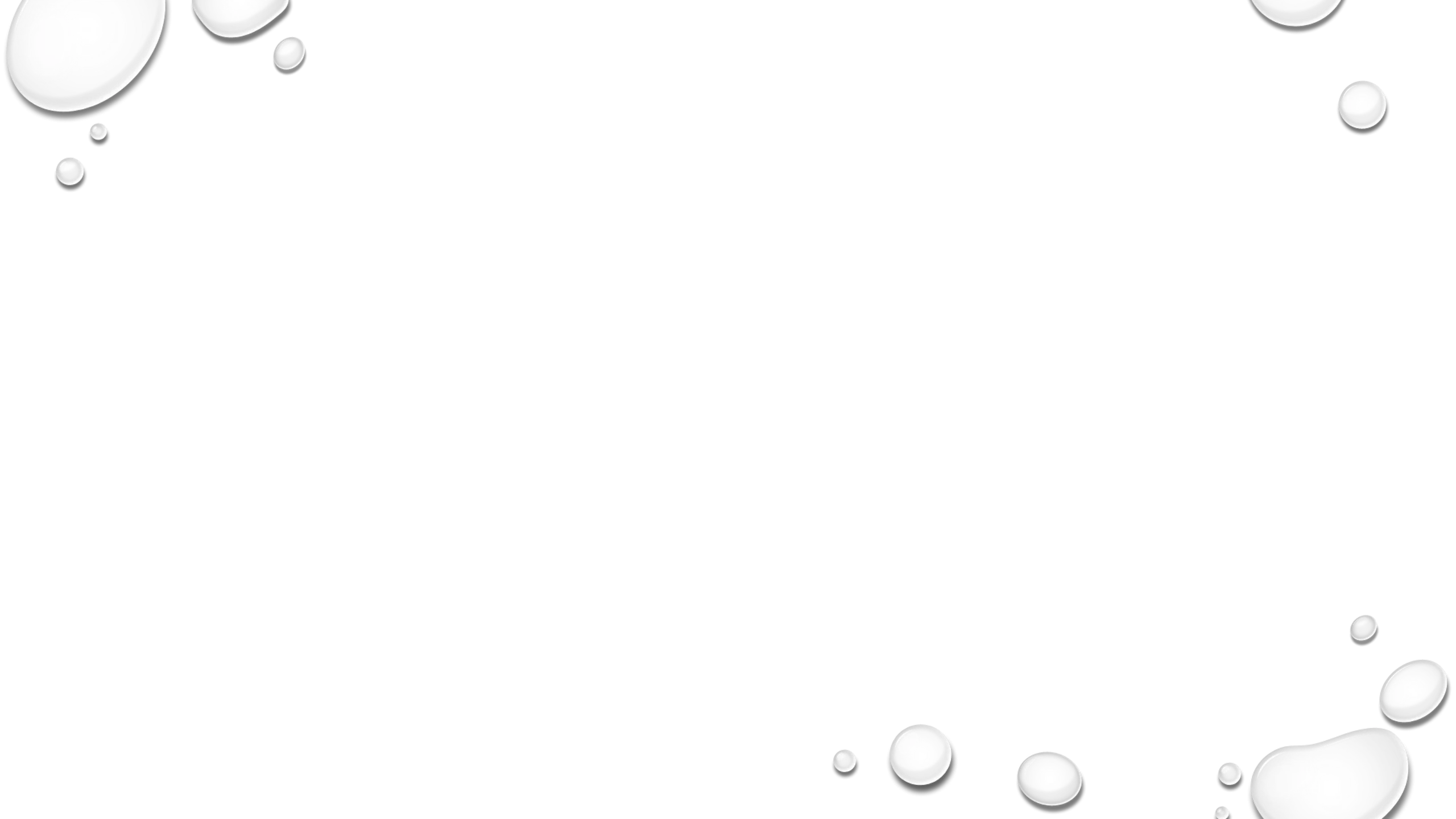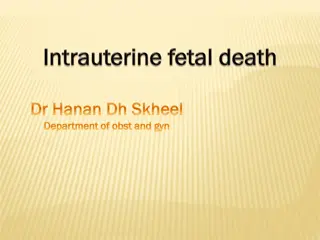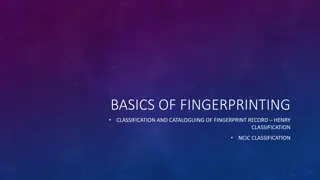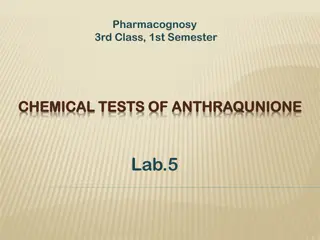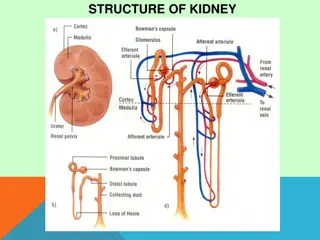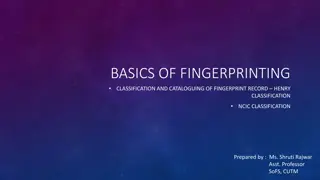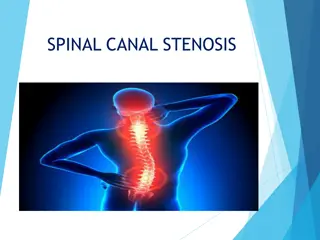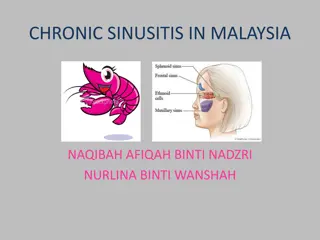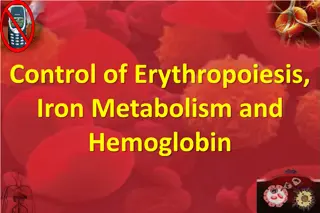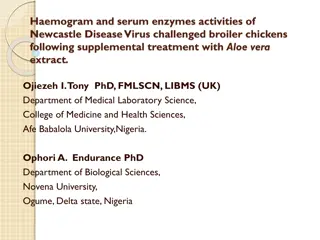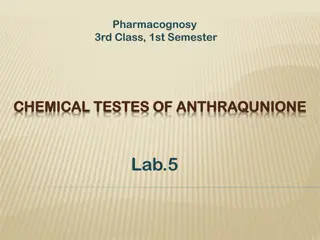Polycythemia Vera: Causes, Symptoms, and Classification
Polycythemia vera is a chronic myeloproliferative disorder characterized by increased red blood cell production due to JAK2 mutations. Learn about its classification, pathogenesis, morphology, and key differences from secondary polycythemia. Early diagnosis and management are crucial to prevent complications.
Download Presentation

Please find below an Image/Link to download the presentation.
The content on the website is provided AS IS for your information and personal use only. It may not be sold, licensed, or shared on other websites without obtaining consent from the author. Download presentation by click this link. If you encounter any issues during the download, it is possible that the publisher has removed the file from their server.
E N D
Presentation Transcript
CHRONIC MYELOPROLIFERATIVE DISORDER- POLYCYTHEMIA VERA, ESSENTIAL THROMBOCYTOSIS, PRIMARY MYELOFIBROSIS, LANGERHANS CELL HISTIOCYTOSIS DR.V.SHANTHI ASSOCIATE PROFESSOR, PATHOLOGY SRI VENKATESWARA INSTITUTE OF MEDICAL SCIENCES TIRUPATHI
POLYCYTHEMIA VERA Neoplasm of multipotent myeloid stem cell, characterized by : activating point mutations in Tyrosine kinase JAK 2 Increased marrow production of erythroid, granulocytic and megakaryocytic elements But the symptoms are mainly due to increased red cells
POLYCYTHEMIA VERA CLASSIFICATION OF POLYCYTHEMIA I. Polycythemia rubra vera (primary) II. Secondary polycythemia a. Appropriate erythropoietin production (tissue hypoxia) eg: high attitude, obesity, (pickwickian syndrome), COPD, cyanotic heart disease b. Inappropriate erythropoietin production eg: erythropoietin producing tumors (RCC, HCC, cerebellar hemangioblastomas) c. familial erythrocytosis eg: hemoglobins with high oxygen affinity
POLYCYTHEMIA VERA CLASSIFICATION OF POLYCYTHEMIA iii. Relative polycythemia (rcm & hematocrit remain normal) eg: - Dehydration, burns, shock - Gaisbock s syndrome (stress polycythemia): hypertensive, obese, nervous males of > 40 yrs with h/o smoking & alcoholism
POLYCYTHEMIA VERA PATHOGENESIS In PCV, transformed progenitor cells have markedly decreased requirements for erythropoietin and other hematopoietic growth factors due to constitutive JAK2 signaling 97% of patients have JAK2 mutations that result in valine to phenyl alaline substitution at residue 617 In remaining cases mutations are different Serum erythropoietin levels are low (high erythropoietin levels in secondary forms)
POLYCYTHEMIA VERA MORPHOLOGY BLOOD : Hemoglobin concentration :18 to 24 g/dl Hematocrit 60% or more Red cell counts of 7 to 10 million/cumm Moderate to marked leucocytosis with shift to left in myeloid series Increased number of basophils and abnormally large platelets Platelets : 5 to 10 lakhs/ cumm
POLYCYTHEMIA VERA MORPHOLOGY BONE MARROW Hypercellular bone marrow Increased number of erythroid, myeloid precursors & megakaryocytes Moderate increase in Reticulin fibres 10% of marrow Late in course PCV progresses to spent phase characterized by extensive fibrosis that displaces hematopoietic cells
Bone marrow aspirate in polycythaemia rubra vera showing marked hypercellularity and increased megakaryocytes
POLYCYTHEMIA VERA MORPHOLOGY Extensive marrow fibrosis is accompanied by extramedullary hematopoiesis in the spleen and liver often leading to prominent organomegaly Transformation to AML with its typical features occurs in about 1% of patients
POLYCYTHEMIA VERA CLINICAL FEATURES Incidence is 1 to 3 / 100,000 per year Appears insidiously, usually in adults of late middle age Skin & mucus membranes Plethora : color of face is ruddy, esp. lips, cheeks, tip of nose, ears & neck Aquagenic pruritis : intense itching after exposure to water, which may be initial presentation of PV. It is seen in 60% of pts. under age 40 Erythromelalgia: reddening, swelling & pain in digits associated with extreme platelet elevations
PLETHORA ERYTHROMELALGIA
POLYCYTHEMIA VERA Increased red cell mass + hematocrit and increased total blood volume Abnormal blood flow, particularly on the low pressure venous side of circulation, which becomes greatly distended Cyanosis due to stagnation and deoxygenation in peripheral vessels
POLYCYTHEMIA VERA CLINICAL FEATURES Other symptoms due to release of histamine from basophils are Headache Dizziness Hypertension GI symptoms Intense pruritus Peptic ulceration
POLYCYTHEMIA VERA CLINICAL FEATURES High cell turn over leads to hyperuricemia (symptomatic gout in 5% to 10% of cases) Abnormality in blood flow and platelet function leads to increased risk of both major bleeding and thrombotic episodes 25% of patients present with deep vein thrombosis, MI and stroke Thormbotic complications preceed hemorrhagic manifestations like epistaxis and bleeding gums Life threatening complications occur in 5% to 10% of cases
POLYCYTHEMIA VERA TREATMENT AND PROGNOSIS Without treatment death occurs with in few months of diagnosis due to bleeding or thrombosis Phlebotomy can extend the life span maintaining the red cell mass If the patient survives for longer time, then the spent phase occurs with the development of myelofibrosis This transition starts after average period of 10 years During this phase splenomegaly occurs due to extramedullary hematopoiesis In 2% of cases PCV transforms into AML
ESSENTIAL THROMBOCYTOSIS Increased proliferation & production of megakaryocytic elements Since all CMPDs are associated with thrombocytosis, essential thrombocytosis is a diagnosis of exclusion ET is often associated with activating point mutations in JAK 2 (50% of cases) MPL (5% to 10% of cases) Few cases show mutations in Calreticulin
ESSENTIAL THROMBOCYTOSIS Constitutive JAK2 or MPL signaling renders the progenitors thrombopoietin independent and leads to hyperproliferation ET manifested by increased platelet count Polycythemia and marrow fibrosis will be absent which distinguishes it from PCV
ESSENTIAL THROMBOCYTOSIS MORPHOLOGY Peripheral smear Platelet count is increased with abnormally large platelets Leukocytosis is present Bone marrow Cellularity mildly increased Megakaryocytes often markedly increased in number and include abnormally large forms Uncommonly marrow fibrosis or transformation to AML supervenes 50% of patients present with organomegaly
ESSENTIAL THROMBOCYTOSIS Clinical features Incidence 1 to 3/ 100,000 per year Age group usually at the age of 60 years but may be seen at any age Indolent disorder with long asymptomatic periods Thrombotic complications include Deep vein thrombosis Portal and hepatic vein thrombosis Myocardial infarction
ESSENTIAL THROMBOCYTOSIS Clinical features Other characteristic symptom is erythromelalgia throbbing and burning of hands and feet caused by occlusion of small arterioles by platelet aggregates, which may also be seen in PCV Median survival time 12 to 15 years Treatment gentle chemotherapeutic agents to suppress thrombopoiesis
CAUSES OF REACTIVE THROMBOCYTOSIS 1. Acute blood loss 2. Iron deficiency 3. Post splenectomy (up to 2 months) 4. Recovery from thrombocytopenia( rebound ) 5. Malignancies 6. Chronic inflammatory and infectious diseases (inflammatory bowel disease, connective tissue disorders, temporal arteritis, tuberculosis, chronic pneumonitis) 7. Acute inflammatory and infectious diseases 8. Response to exercise 9. Response to drugs 10.Hemolytic anemia
PRIMARY MYELOFIBROSIS SYNONYMS OF PRIMARY MYELOFIBROSIS Idiopathic myelofibrosis Osteomyelo fibrosis Angiogenic myeloid metaplasia Myelofibrosis with myeloid metaplasia (MMM)
PRIMARY MYELOFIBROSIS Pathogenesis Activating JAK2 mutations are present in 50% to 60% of cases Activating MPL mutations in an additional 1% to 5% of cases of primary myelofibrosis Remaining cases have mutations in calreticulin that are hypothesized to give rise to increased JAK-STAT signaling
PRIMARY MYELOFIBROSIS Characterized by rapid development of obliterative marrow fibrosis Replacement of marrow by fibrous tissue reduces marrow hematopoiesis, leading to cytopenias and extensive extramedullary hematopoiesis Marrow fibrosis is due to inappropriate release of fibrogenic factors (PDGF & TGF- ) from neoplastic megakaryocytes
PRIMARY MYELOFIBROSIS Pathogenesis As the marrow fibrosis progresses, circulating hematopoietic stem cells resides in niches in secondary hematopoietic organs, such as spleen, liver and lymphnodes leading to the extramedullary hematopoiesis
PRIMARY MYELOFIBROSIS Morphology Early in course Hypercellular marrow due to increase in maturing cells of all lineages Morphologically Megakaryocytes are large, dysplastic and abnormally clustered Granulocytic and erythroid precursors appear normal At this stage fibrosis is minimal Smear leukocytosis and thrombocytosis
PRIMARY MYELOFIBROSIS Morphology With progression Marrow becomes hypo cellular and diffusely fibrotic Clusters of atypical megakaryocytes with unusual nuclear shapes (Cloud-like) are present Hematopoietic elements are found in dilated sinusoids Very late course Fibrotic marrow space may be converted into bone, a change called - Osteosclerosis
PRIMARY MYELOFIBROSIS Morphology Fibrotic obliteration of marrow space leads to extensive extramedullary hematopoiesis producing Splenomgaly Hepatomegaly Lymphadenopathy (rarely hematopoiesis occurs in lymphnodes)
PRIMARY MYELOFIBROSIS Peripheral blood picture Normocytic normochromic anemia Leukoerythroblastosis due to premature release of nucleated erythroid and early granulocytic progenitors and immature cells from the sites of extramedullary hematopoiesis Tear drop cells (Dacrocytes) Cells which are probably damaged during the birthing process in the fibrotic stroma Other findings Giant platelets Basophils
PRIMARY MYELOFIBROSIS Clinical features Median age at diagnosis : 60 yrs Familial form has been reported Weight loss, bleeding, splenic pain, jaundice etc., Hepatosplenomegaly (> 50% of cases)
PRIMARY MYELOFIBROSIS Diagnostic criteria Major criteria : Diffuse bone marrow fibrosis Absence of Philadelphia chromosome or bcr/abl rearrangement in peripheral blood cells Splenomegaly
PRIMARY MYELOFIBROSIS Diagnostic criteria Minor criteria : 1.Anisopoikilocytosis with teardrop red cells 2.Circulating immature myeloid cells 3.Circulating nucleated red cells 4.Clustered marrow megakaryoblasts & anomalous megakaryocytes 5.Myeloid metaplasia Criteria essential for diagnosis : All 3 major criteria + any two minor criteria First 2 major criteria or any 4 minor criteria
LANGERHAN CELL HISTIOCYTOSIS Histiocytosis variety of proliferative disorders of dendritic cells or macrophages Langerhan cell histiocytosis spectrum of clonal proliferation of immature dendritic cells considered as unusual myeloid neoplasm
LANGERHAN CELL HISTIOCYTOSIS Pathogenesis Most common mutation activating valine to glutamate substitution at residue 600 in BRAF Less common mutations detected are TP53, RAS and the receptor tyrosine kinase MET Factor that contributes to homing of neoplastic Langerhan cells is the aberrant expression of chemokine receptors Epidermal Langerhan cells express CCR6, their neoplastic counterparts express both CCR6 AND CCR7 This allows the neoplastic cells to migrate into tissues that express relevant chemokines CCL-20 ( a ligand for CCR6) in skin and bone and CCL19 and CCL21 (ligand for CCR7) in lymphoid organs
LANGERHAN CELL HISTIOCYTOSIS MORPHOLOGY Proliferating langerhans cells have abundant, often vacuolated cytoplasm and vesicular nuclei containing nuclear grooves or folds Presence of Birbeck granules in the cytoplasm is characteristic Birbeck granules are pentalaminar tubules often with a dilated terminal end producing tennis-racket like appearance which contains the protein Langerin In addition tumor cells express HLA-DR, S-100, and CD 1a
LANGERHAN CELL HISTIOCYTOSIS Clinical features Presents as Multifocal multisystem Langerhan cell histiocytosis (Letterer-Siwe disease) Unifocal and multifocal unisystem Langerhan cell histiocytosis (Eosinophilic granuloma) Pulmonary Langerhans cell histiocytosis They may heal spontaneously or may be cured by local excision or irradiation





